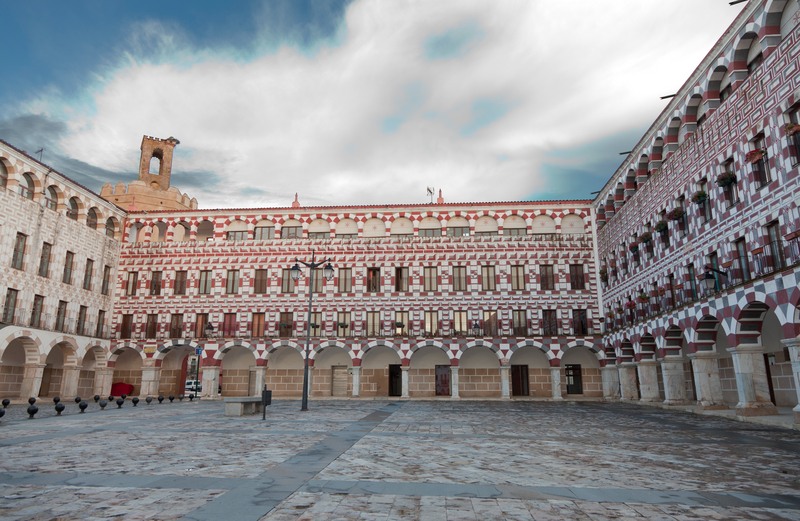Although the largest province in Spain, Badajoz has a population of only 662,000, making it one of the least densely populated provinces in the country. During the reign of the Roman Empire, Badajoz, the capital city of the Province gained a reputation throughout the world as a fortress city because of its strong walls, outworks, and large moat.
The Portuguese continually sought to control Badajoz throughout the 1700s, but they were unsuccessful in this endeavor. France attempted to raid the city in 1809 and this raid failed as well. However, in 1812 the future Duke of Wellington led a siege on the city and Badajoz finally fell into foreign hands when taken over by the British. Now a frontier province of Spain, Badajoz features a calm and inviting atmosphere where locals are friendly and welcome visitors and tourists with a smile.
 One can still see Medieval architecture in the city’s buildings, convents, and palaces such as the outstanding Palace of the Duques de Feria, which was built in the 1400s. Another impressive attraction is the Alcazaba, which is an Arab castle surrounded by a magnificent ornate wall.
One can still see Medieval architecture in the city’s buildings, convents, and palaces such as the outstanding Palace of the Duques de Feria, which was built in the 1400s. Another impressive attraction is the Alcazaba, which is an Arab castle surrounded by a magnificent ornate wall.
Another landmark worth visiting is the Iglesia de Santa Domingo church, which was originally designed and built in the 1200s. The San Juan Cathedral is also a very impressive structure that archeologists believe was constructed between the 12th and 16th centuries. Its style is predominantly Gothic Roman, with twelve inner chapels and three main aisles.
One may also wish to stroll through Badajoz’s historical quarter where ancient buildings such as the La Plaza Alta and the aforementioned churches are located. Visitors can also observe the beautiful 15th century towers that flank the old city entrance. Built in the 1500s, the Puente de las Palmas Bridge is another sight that visitors will not want to miss when visiting the city’s historical quarter. The bridge crosses the Guadiana River and features 32 stunning arches.
The city of Badajoz also boasts many impressive museums featuring Spanish, Arab, Visigo and Roman artifacts and sculptures. The Iberoamerican Museum of Contemporary Art is also an excellent choice if one has an interest in ancient artifacts, rare archeological discoveries, and German art.
There are some great restaurants in Badajoz city offering traditional dishes made from quality ingredients such as lamb, beef, and locally grown produce, herbs and spices. Most restaurants in the city also serve a wide variety of high-end wines.
Shopping is always a fun activity in Badajoz, and tourists should take advantage of the reasonable prices that can be found at one of the many outdoor markets and boutiques. Visitors can also find great bargains on excellent local cheeses, wines, olive oil and Serrano ham from local vendors. In addition, many of the nuns at the local convents offer tourists homemade sweets and pastries which come highly recommended.
Visitors can enjoy pleasant temperatures and abundant sunshine throughout most of the year in Badajoz, and the area is typically not crowded with tourists even during peak season. This makes Badajoz an ideal vacation destination for those who are seeking rest and relaxation in beautiful surroundings.





